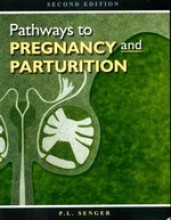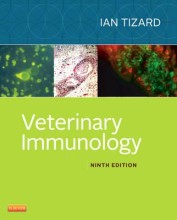Summary: Adp-21803
- This + 400k other summaries
- A unique study and practice tool
- Never study anything twice again
- Get the grades you hope for
- 100% sure, 100% understanding
Read the summary and the most important questions on adp-21803
-
puberty
This is a preview. There are 56 more flashcards available for chapter 09/02/2020
Show more cards here -
Two possible mechanisms leading to puberty
- caused by a stepwisedesensibilization of thehypothalamus for the negative feedback of oestrogen and testosterone -> rise in levels of GnRH, LH/FSH and sex steroids
- the pituitary could become more responsive to GnRH and the resulting levels of gonadotropins results in higher levels of sex steroids -
Changes in the reproductive organs during puberty
Males:
- Testes growth -> interstitial tissue (mostly leydig cells) + seminiferous tubulus develop
- high increase of Leydig cells during puberty as a consequence of LH
Females:
- the first antral follicles appear long before the first oestrus
- complete follicular development and ovulation are observed only when LH and FSH have reached post-pubertal cyclic profiles -
Factors for age at first oestrus
- nutritional factors: suboptimal nutrition extends the pre-puberal phase. Puberty cannot take place until the animal has reached a certain physiological development
- seasonal factors: are mainly the result of ambient temperature and hours of light per day.
- social factors: in pigs there is an influence of mature boar contact on puberty attainment, as this offers auditory, visual, olfactory and tactile stimuli -
2-cell-2-gonadotropin model
- Theca cells produce androgens (mostly testosterone) when LH binds to LH receptors
- These androgens diffuse to the granulosa cells which have FSH receptors
- after binding FSH -> aromatase activity converts testosterone into oestrogens -
Follicle development during pregnancy and lactation
- pregnancy -> high progesterone levels -> prohibit follicle development and ovulation
- after pregnancy -> progesterone concentrations drop
- during lactation -> follicle development remains suppressed -
Morphology of sperm cells
head:
- consists of thenucleus
-anterior end is covered by the acrosomal cap
- containing hydrolytic enzymes -> important role in thefertilization of an oocyte
tail:
- central part of the tail -> fromed by anaxoneme, composed of nine pairs of microtubules around two central filaments
-axoneme is responsible for the motility
- middle piece: axoneme is surrounded by fibres that are surrounded by a circle of mitochondria
- principal piece: axoneme is surrounded by fibres
- end piece: contains only the axoneme convered by the plasma membrane -
Passage of sperm cells through the epididymis
- immature spermatozoa -> released into the lumen of the seminiferous tubulus -> swept to the rete testis by fluid secretions -> epididymis -> vas deferens -
Abnormal sperm cells
Primary:
- due to failure of spermatogenesis
- include abnormalities of the mid piece and tail
- selection occurs by selective resorption or lysis
secondary:
- occurs during the passage through the epididymis
- include tailless, heads, cytoplasmatic droplets or bent tails
tertiary:
- occuring during or after ejaculation -
Cyclicity of sexual behaviour in female mamals
Pro-oestrus:
- females become more attractive
- proceptivity by searching for mates
Oestrus:
- attractivity, proceptivity and receptivity
- at the end -> surge in LH from the anterioir lobe of the pituitary -> ovulation
Metestrus:
- luteal phase of the reproductive cycle
- occurring after ovulation
- development of the corpus luteum
- increased progesterone
- decreased oestrogen -
fertilisation
This is a preview. There are 41 more flashcards available for chapter 10/02/2020
Show more cards here -
Transport of oocytes to the site of fertilisation
- oocyte transport -> movements of the cilia on the fimbriae
- coordinated contractions of the fimbriae, the utero-overian ligaments and the mesovarium
- Higher grades + faster learning
- Never study anything twice
- 100% sure, 100% understanding






























